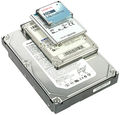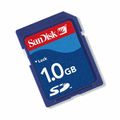User:Lynnae/Laptop Extended Evaluation Guide
Extended Evaluation Guide
1. Data security check
We are responsible for securely wiping or destroying any storage device that is donated to Free Geek. This commonly means removing hard drives to be wiped, but keep an eye out for other kinds of data storage devices as well.
What to keep in mind when removing hard drives
☐ Make sure to separate any caddy parts and adapters from the hard drive.
☐ Tape any caddy parts, adapters, and screws together back inside the hard drive bay. These should stay with the system unless your instructor needs them for parts.
☐ Only ever leave hard drives and other storage devices in a designated box or with your instructor.
Check for disks and other storage media
☐ Check the optical drive for disks.
- Look for the small quick-release hole on the faceplate, and use a paperclip to manually open the drive.
☐ Take a quick look for other kinds of media, let your instructor know if you find anything.
Commonly encountered storage devices:
- 3.5" hard drives (Desktop size)
- 2.5" hard drives (Laptop size)
- Optical disks
Less commonly encountered storage devices:
- 1.8" and other odd-sized small form-factor hard drives
- Mini PCI or mini PCIe solid state drives
- Small media cards (SD, Compact Flash, etc)
- SIM cards
- Floppy disks
- PCMCIA (PC Card) hard drives
- Examples
2. Physical Evaluation
☐ Take a good look at the laptop you are evaluating. Start by looking for:
- Missing cover plates from the back of the laptop
- Missing battery or optical drives
- Missing keyboard or keys
- Cracked case parts or broken hinges
- Damaged ports
- Visible screen damage
- This appears as hairline cracks or dark splatter-like marks inside the screen.
- Oxidation or evidence of liquid spills
☐ Check in with your instructor if you find any noteworthy physical issues. They may have you follow the Recycling or As-Is Guide instead.
3. Find an appropriate AC adapter
Requirements
For an AC adapter to power the device correctly, it must:
- Match the input voltage (V) of the laptop exactly.
- Match or exceed the recommended amperage (A).
- Have a plug that fits into the laptop snugly and provides power.
☐ Find the input voltage and amperage listed on the laptop. This may be printed on the back of the laptop, or on the chassis under the battery.
☐ Find an AC adapter that matches the voltage and amperage listed on the laptop. You will be looking in the output section printed on the AC adapter, which should look like this:
INPUT: 100-240V~1.9A
50/60Hz
OUTPUT: 16V ⎓ 4.5A
Tip
AC adapters are sorted in bins by voltage, amperage, and brand; the bins are color-coded by brand.
4. POST
☐ Try turning the machine on.
☐ POST troubleshooting
- RAM installation step?
- POST troubleshooting guide?
5. Determine Specifications
- BIOS guide? what do we need from BIOS here?
6. Keeper label
7. Install components
- RAM
- HDD



